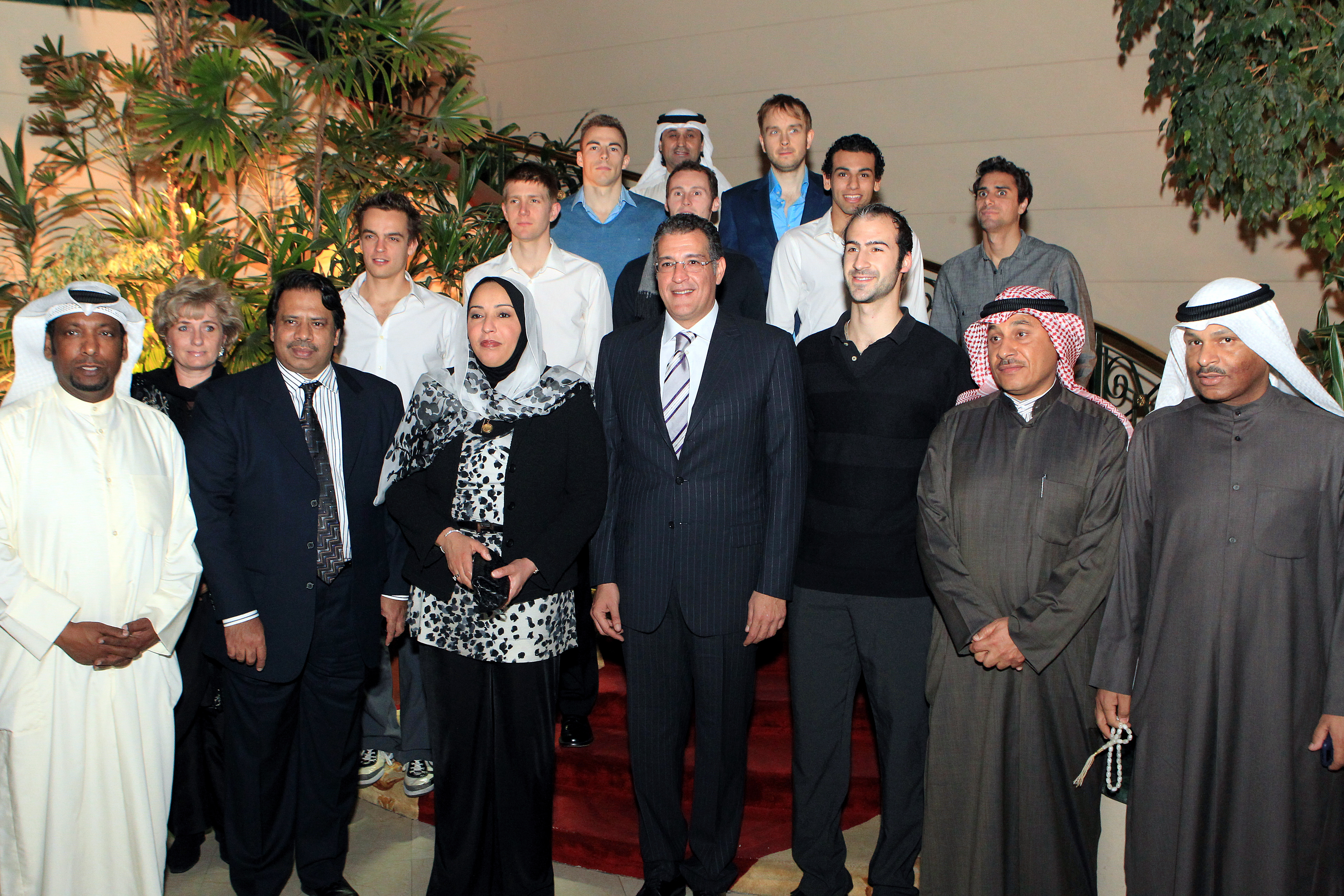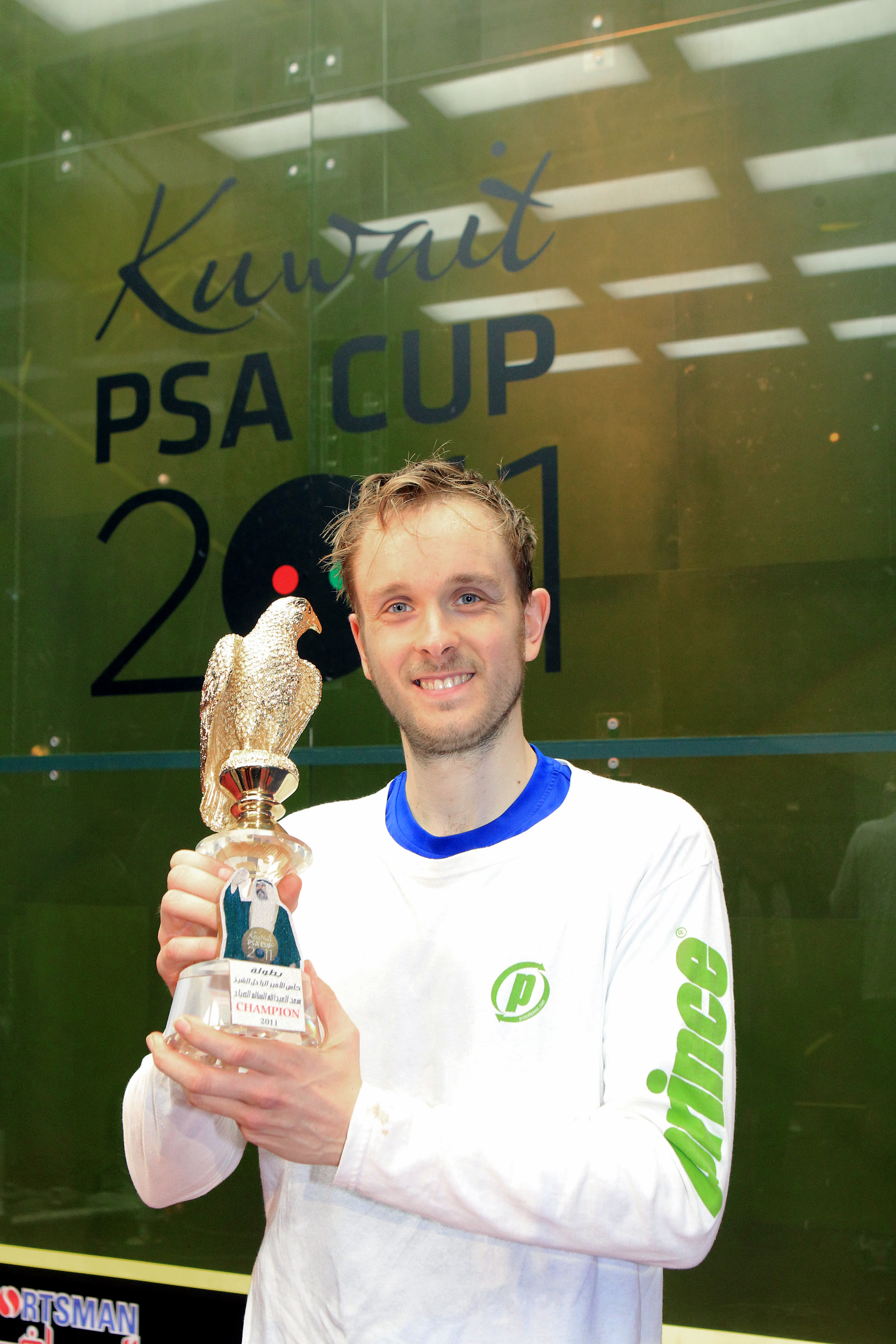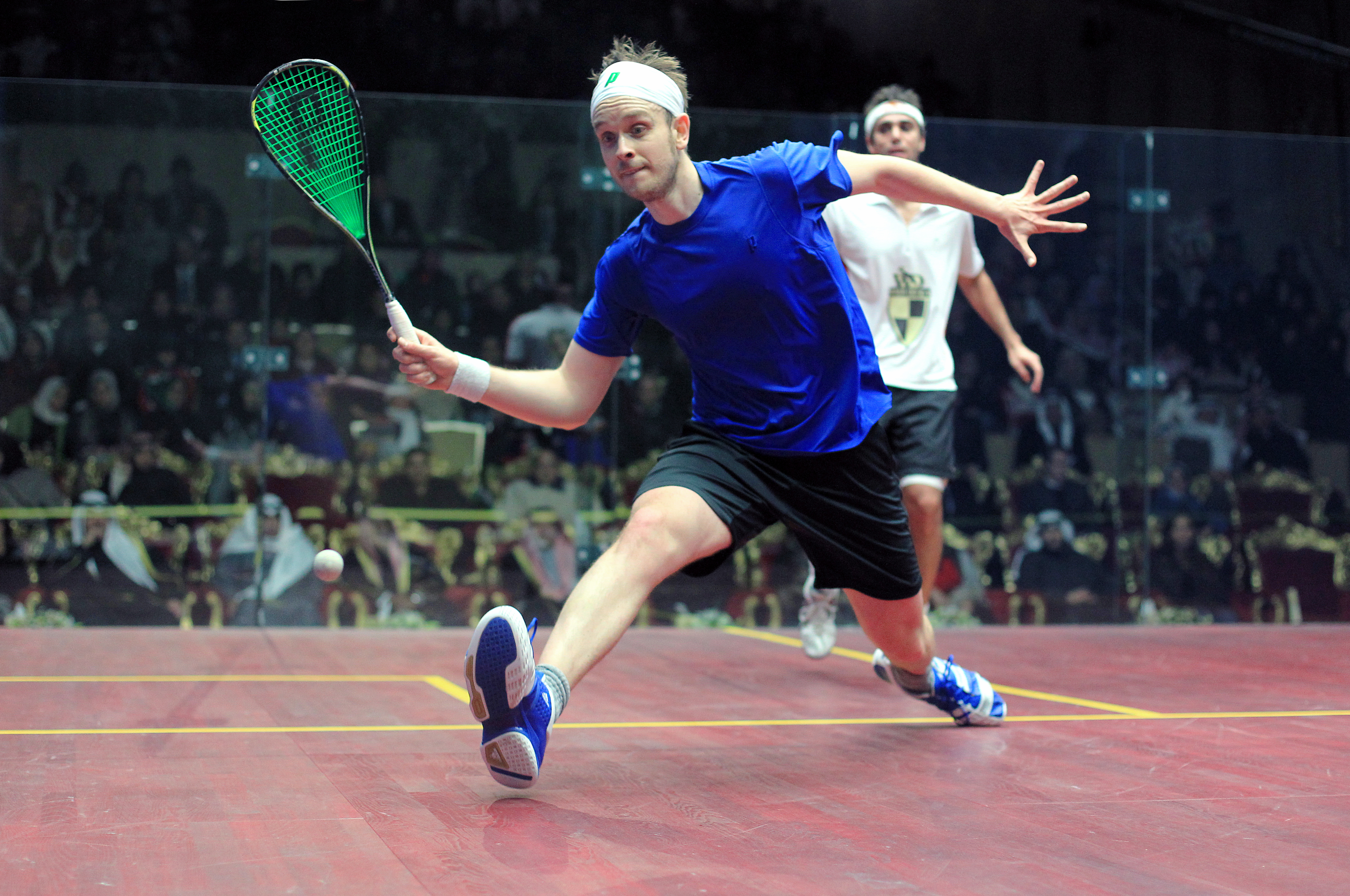
By Richard Eaton
Photos by Steve Line/SquashPics.com
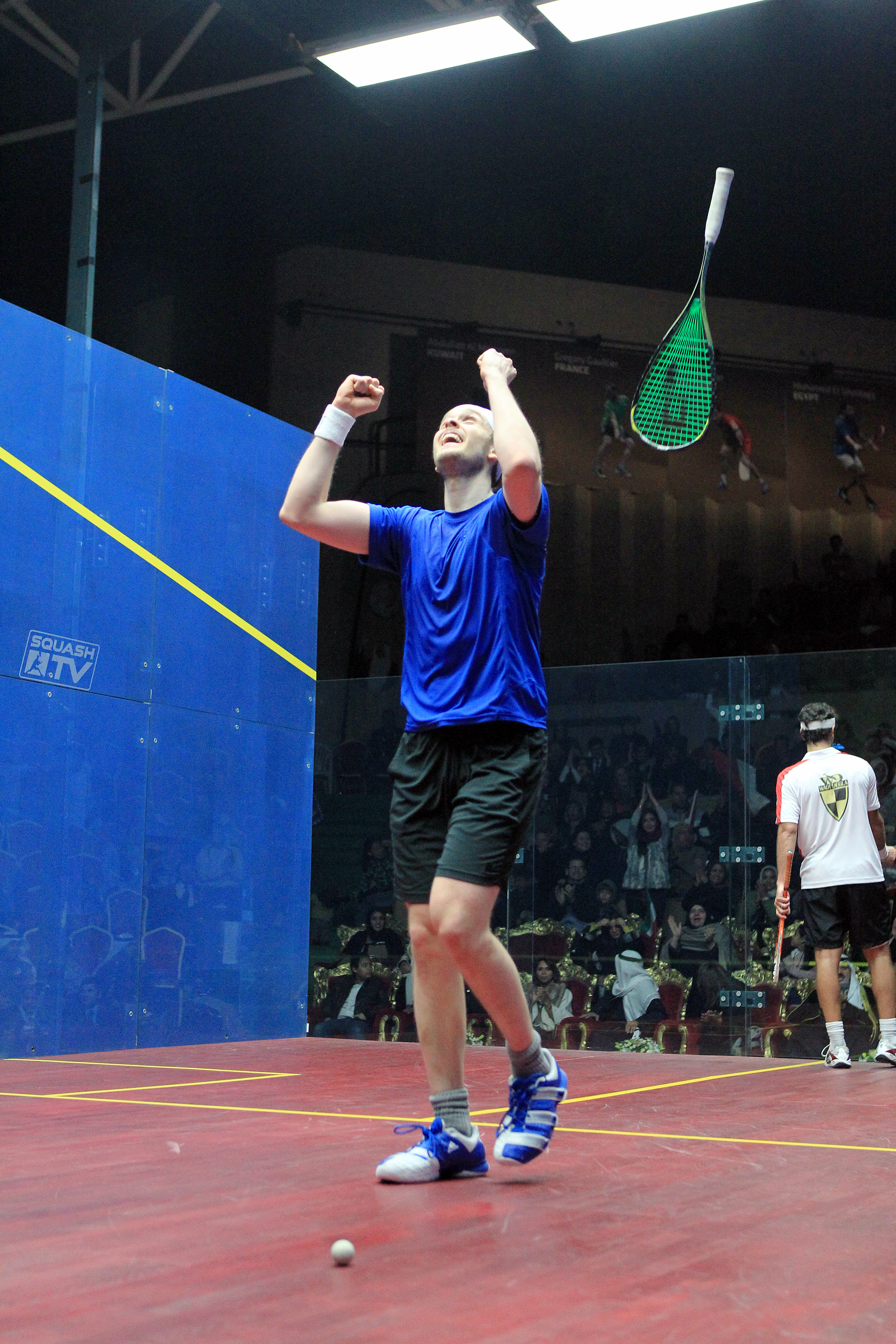
From the moment James Willstrop stood arms aloft and triumphant, not far from what used to be Saddam Hussein’s killing fields, it was clear that squash was likely to gain a very unusual new World No. 1.
Willstrop had often been viewed as having missed his best chance of reaching the top. But in Kuwait city he captured the biggest title of his career, and took a huge penultimate step on a climb which carried him all the way to the pinnacle with three World series titles in a row.
There were other achievements too—unstinting accolades from fellow professionals and a stunning sequence of 28 won games over nine and a half matches and two tournaments, leading to the 15 successive wins that propelled Willstrop to his Hong Kong-Kuwait-New Delhi hat-trick.
The Briton also held aloft the most politically significant trophy in squash, the Kuwait Cup, which was created as part of the 50th anniversary celebrations of that embattled nation’s independence. From Britain.
It can be hard for outsiders to the Mideast to comprehend how much this means. After the British left in 1961, Iraq sought to restore a suzerainty it had during the Ottoman empire. A military response, Operation Vantage, had to be summoned before Kuwait’s large and landlocked neighbor acknowledged its hard-earned freedom.
If that all sounds a bit ancient and academic, it may need recognizing that there have been a series of remarkable connections between squash and world history in fabulously oil-rich Kuwait.
These intensified in the early nineties, when Kuwait was again fighting for its existence. This time the threat came from Saddam Hussein, and it was only after the US-led response of Operation Desert Storm and devastation to the oil fields that the invasion of 1990-91 was repelled.
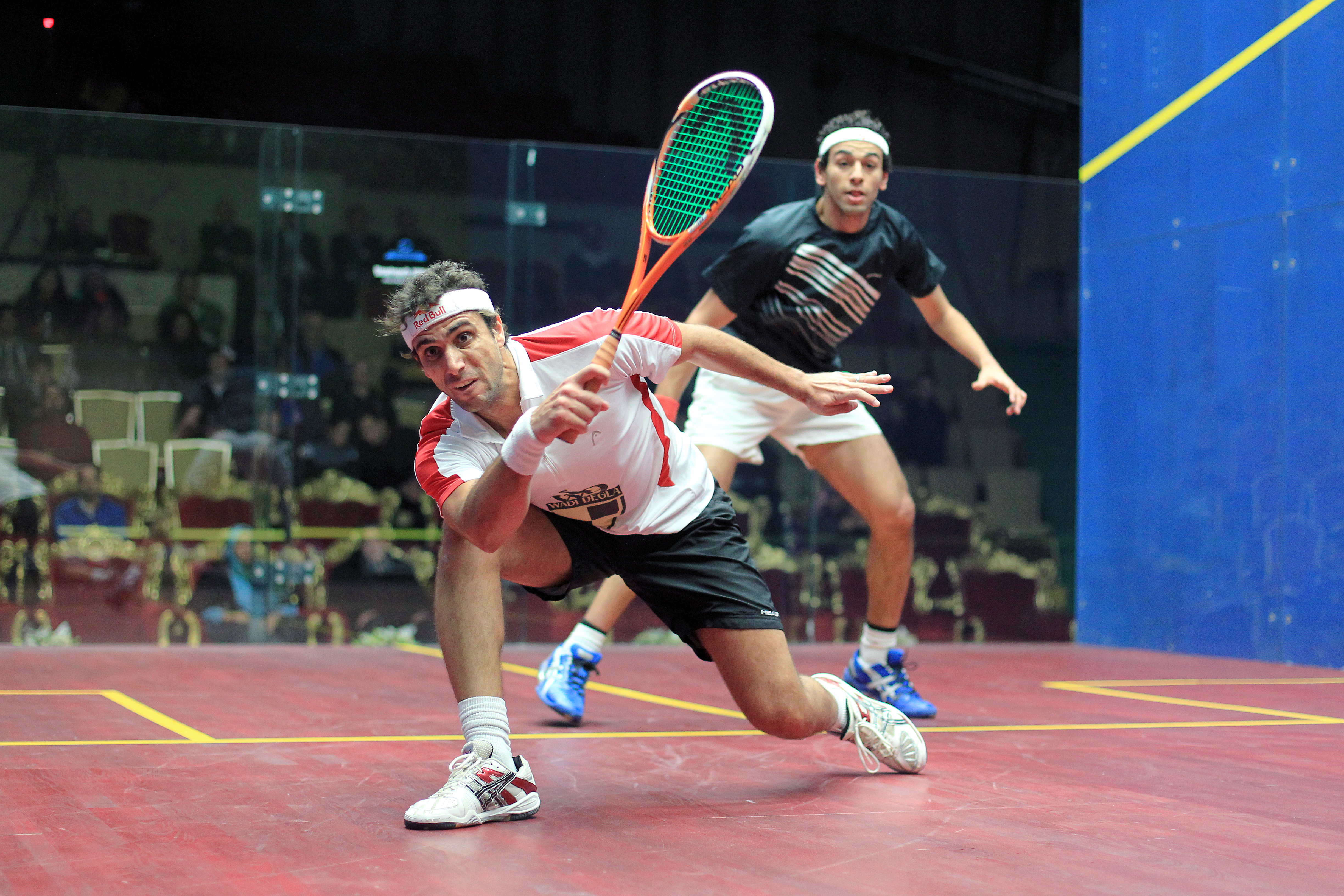
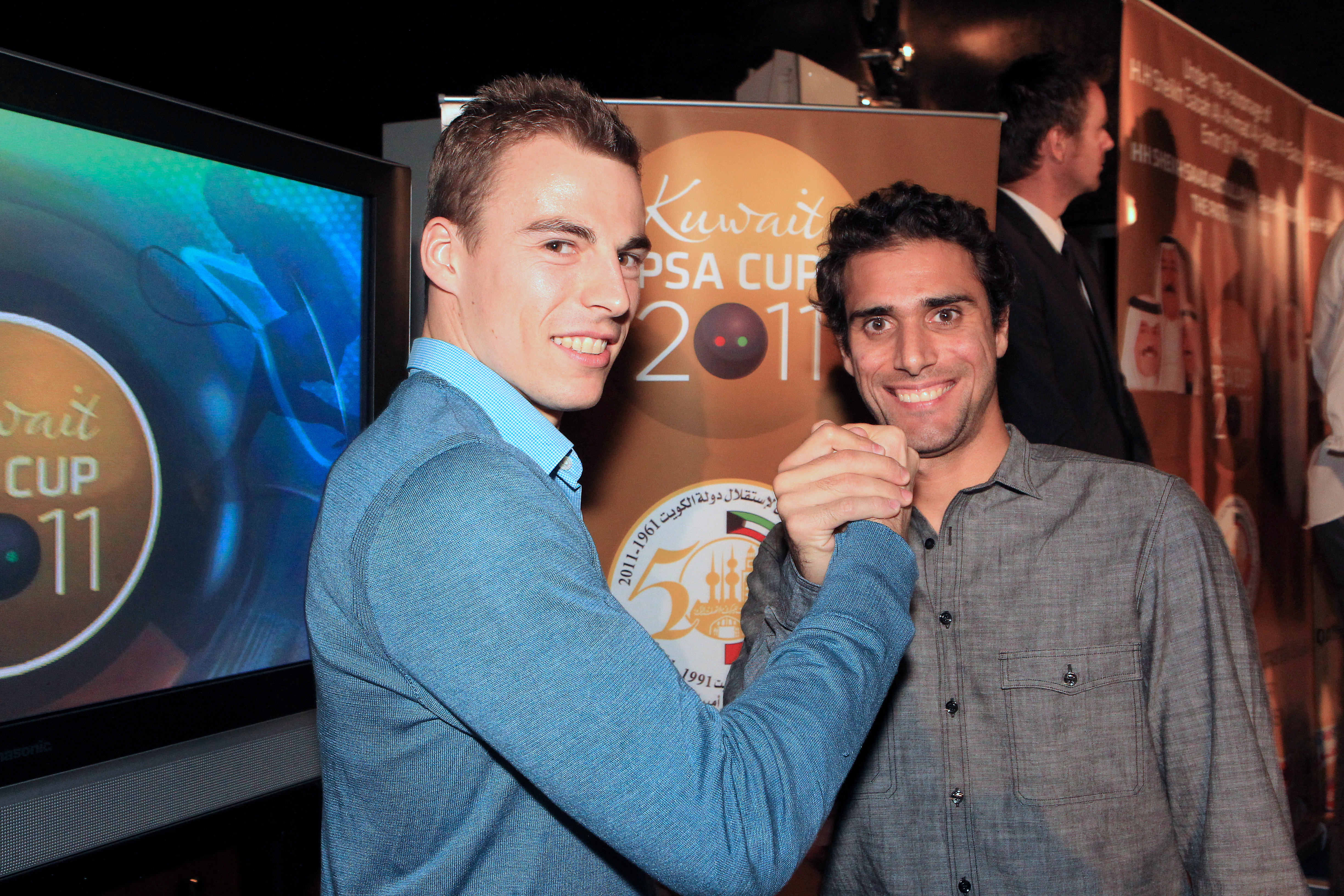
The triumphalist squash event which followed, the Liberation Cup in 1992, was part of the nation’s emotional healing. Nothing could have been more appropriate than the winner being Jahangir Khan. He was arguably the greatest player of all time, with his own remarkable story of conquering adversity, and Kuwaitis empathize strongly with that.
So now Jahangir was back as one of the organizers of the Kuwait Cup, a sporting landmark with wealthy royal patronage, and a $165,000 prize fund which made it the joint richest tournament outside the World Open.
And so it was in very high profile company that Willstrop produced the most consistently excellent performances of his career. Having already disposed of one former world number one, Gregory Gaultier, he concluded by beating another, Karim Darwish, winning 11-7, 10- 12, 11-4, 11-2, against the Egyptian who had thwarted him painfully in the world team finals.
It happened with the background of another rumble of history. Even as music, fireworks and squash celebrated the half century of fiercely-earned progress, a siege of the Kuwaiti parliament was taking place, with demonstrators demanding the prime minister’s resignation. The Arab Spring was pervading the Gulf winter.

None of this would have been lost on Willstrop, a perceptive, deep thinking man, the son of Britain’s most successful coach, and the boyfriend of Vanessa Atkinson, the former world champion.
He is also a good musician, a passionate vegetarian and a tenaciously ambitious player with the body of an offensive linebacker. Adapting his game to the needs of that build has probably more than anything helped him to the top.
When Willstrop reached world number two, back in 2005, his shot-making was flamboyantly expressive. Now it has become more cogent and self-contained.
Multiple twists and turns with that tall and weighty physique some time ago became difficult without risk of injury. By 2009 an ankle operation had become necessary, and during the lengthy recovery period some felt that Willstrop’s game had lost an important edge. Now, aged 28, he has proved them spectacularly wrong.
The injury and his improvement are intimately connected. Preserving the ankle led him to different, more fluid patterns of movement. And these in turn brought an evolution in his style of play.
The new Willstrop does not open up the court quite so often or fizz the ball around as much as the player who burst through six years ago by winning the Qatar Classic and reaching the semis of the World Open. But economies and tactical orthodoxies are serving him better.
“You are always going to have doubts about an area you’ve had an operation on,” Willstrop explained. “I basically adapted my squash to my physical constitution.”
That meant making use of more prosaic virtues—accuracy, concentration, patience, weight of shot, and building a rally with good line and length. He has become even more accurate and extraordinarily consistent.
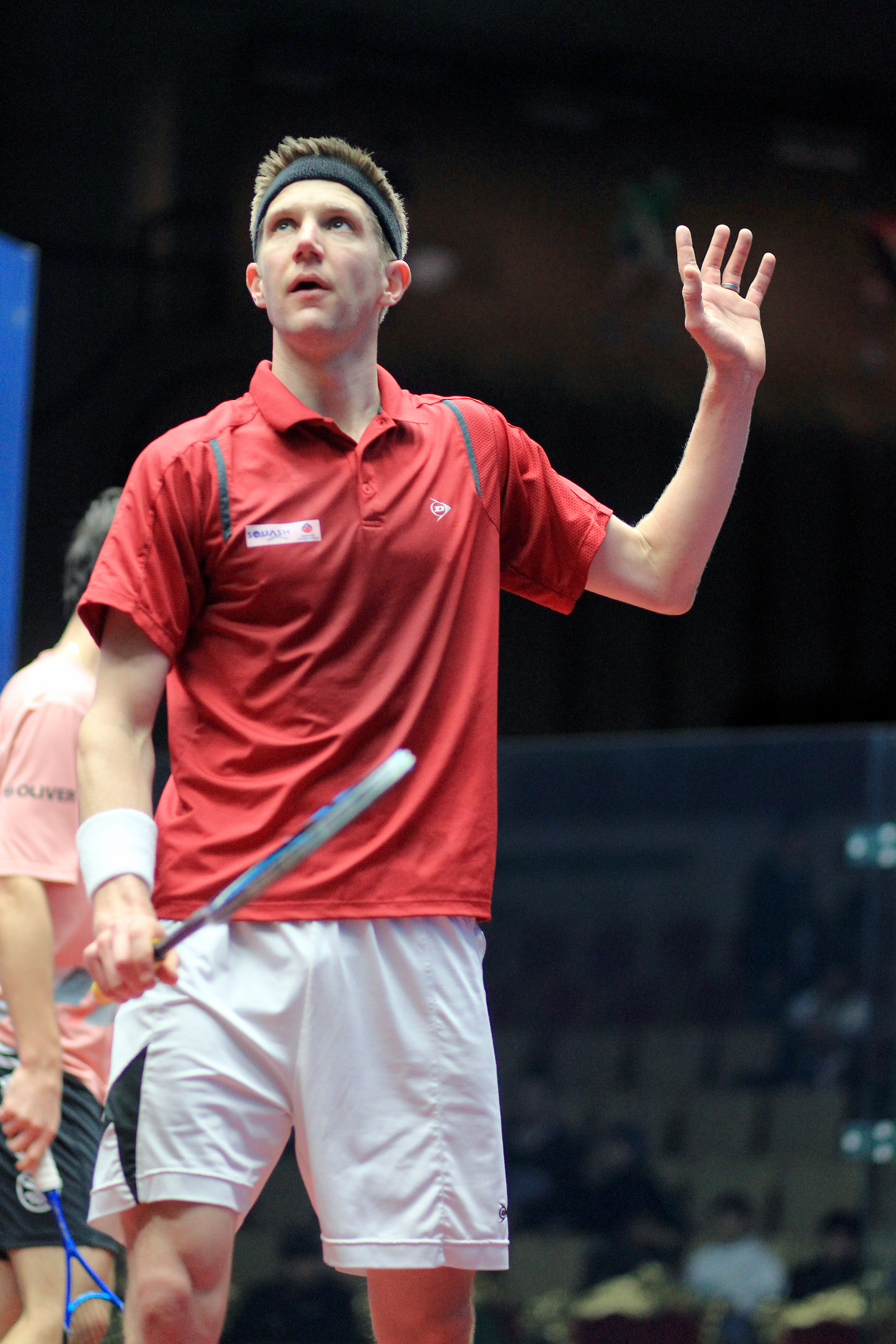
“He played the perfect game,” Gaultier volunteered after Willstrop had beaten him 11-9, 11-9, 11-1, in the Hong Kong semis. Another former world number one, Karim Darwish, whom Willstrop beat both in the Hong Kong and the Kuwait final, was almost as complimentary.
“I just couldn’t get in front of him or get a length, and then at that sort of game he is the best in the world,” Darwish said, referring to wide-ranging abilities to punish anything short.
But before he did that WiIlstrop played tighter and straighter than ever, combining it with a jerk-free court coverage, and carefully selecting the moments to unleash his always considerable attacking skills.
Willstrop also made his carefully constructed squash work in very different conditions. On Kowloon’s spectacular waterfront, which was enlivened by dancing waves and glittering skyscrapers, and surrounded by rocky mountains, they were humid, fast, and bouncy.
On the flat coastline of Kuwait’s manmade Green Island, where it can be chilly on a November night, conditions were sharper and more bracing. They made the ball less responsive and more elusive, and the court feel longer and wider.
Those contrasts highlighted Willstrop’s adaptability more than ever. He won the Hong Kong final by being prepared to play long and accurate rallies, denying Darwish openings no matter how long it took.
But in Kuwait he maintained pressure through a tighter and tighter line and length only until Darwish showed signs of faltering. That happened in the third game, when Darwish’s length deteriorated. Then Willstrop went for him, carving and slicing out winner after winner and taking the last ten points in a row.
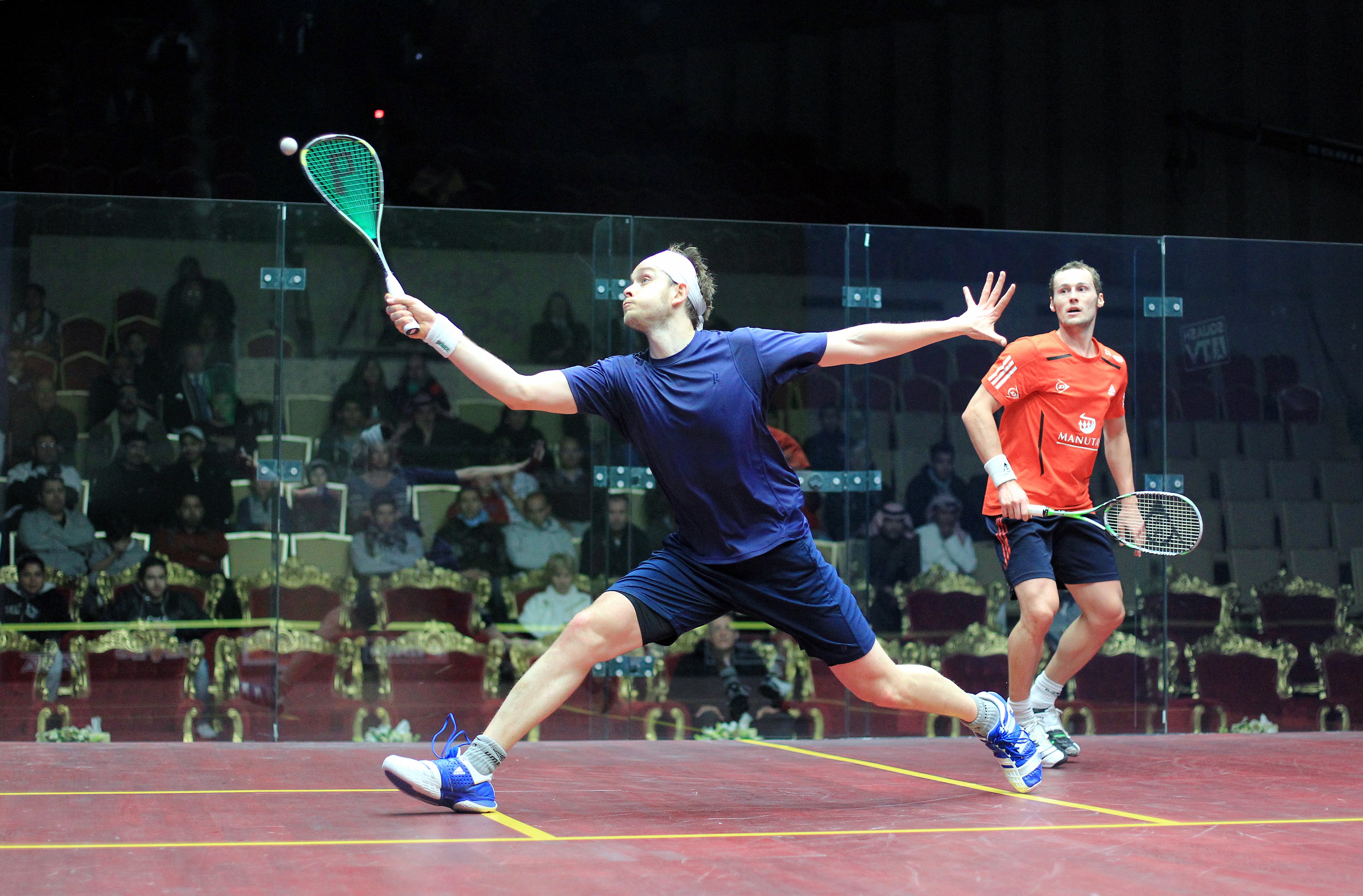
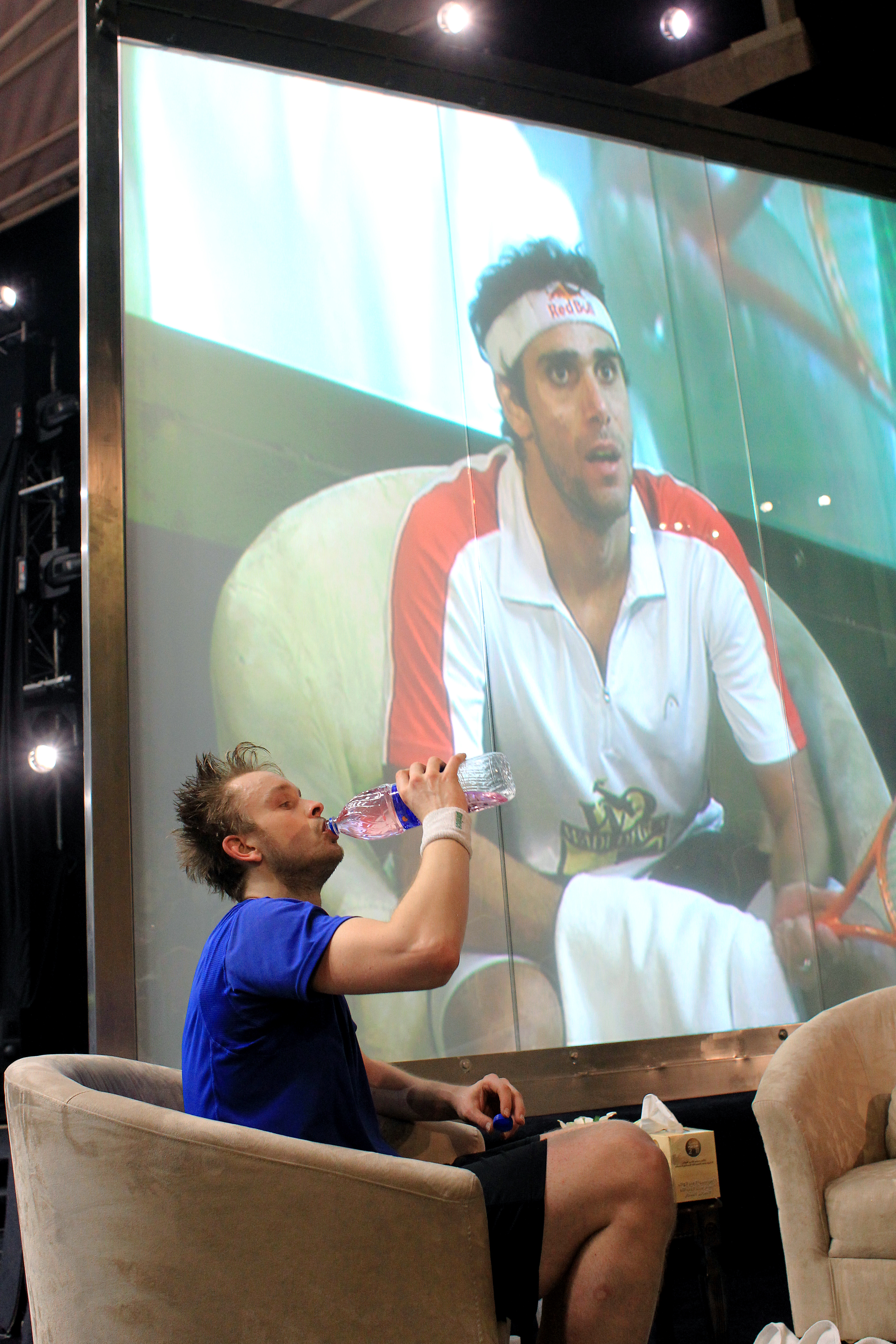
In the Delhi final, Willstrop again repelled Gaultier, and again his accuracy and economy were decisive. After winning a marathon first game lasting more than 50 minutes by 21-19, Gaultier began to suffer, and at 1-6 down in the fourth game he retired with cramp.
The physical significance of Willstrop’s re-worked squash became even clearer with the late season calamities befalling the three biggest names. Amr Shabana, who won the last of his four World Open titles on the same Green Island two years previously, followed his dismal first round loss to Azlan Iskandar in Hong Kong with another to Simon Rosner, the rising German.
Ramy Ashour, who hobbled tearfully out of the World Open with a chronic repetitive hamstring injury, was not fit enough to take part either in Hong Kong or Kuwait. When he returned at Delhi where he reached the quarterfinals he was barely fit enough to contend.
Then Nick Matthew, having defended his world title so magnificently, pulled out in the Kuwait quarterfinals with an adductor muscle problem. Its timing had a hint of coincidence as well as considerable significance.
First it opened up a more inviting route for Willstrop, who was suddenly free of the nemesis which had overcome him 11 times in a row. It also kept Matthew out of Delhi, where he had had a large number of ranking points to defend. It was then that Willstrop knew he had a great chance to end the year as number one.
There were three implications of the world champion’s exit. It underlined Willstrop’s achievement in remaining fit enough to travel, compete, and to win amidst a schedule which other leading players could not survive at their best, or not at all.
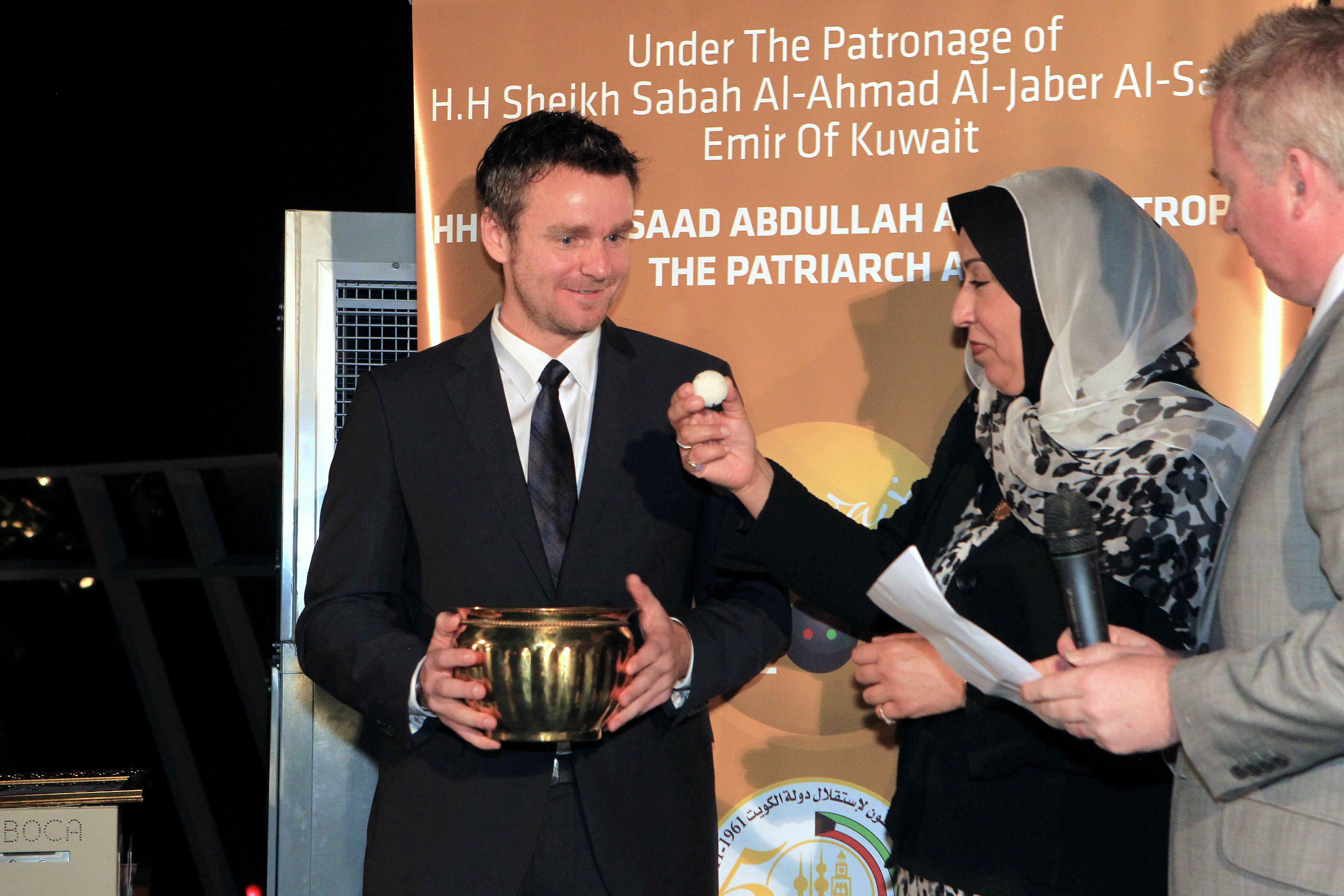
It also suggested that Matthew had altered priorities, choosing not to risk his body to protect his world number one ranking. He may have decided, at 31, that attempting the long slog required to top the list is no longer as important as peaking for certain major events.
And thirdly Matthew’s decision to quit happened after a rest day during which a controversial new system— drawing the quarterfinal places afresh—was enacted. It resulted in an unexpected last eight meeting of the two top seeded players, Matthew and Darwish, something unattractive for a physically struggling player.
The idea behind the innovation was to test the possibilities for a new style of tournament, one with more uncertainty and less predictable outcomes. The aim is to attract more attention to the sport.
Despite the inconvenience it created for Matthew, he was not against the experiment. Indeed he reckoned it did not go far enough. He would, he said, prefer the concept to be extended to a draw before every round, as in the British soccer’s F.A. Cup. This offers un-fancied teams more chance of improbable and romantic successes and creates massive television coverage all over the world.
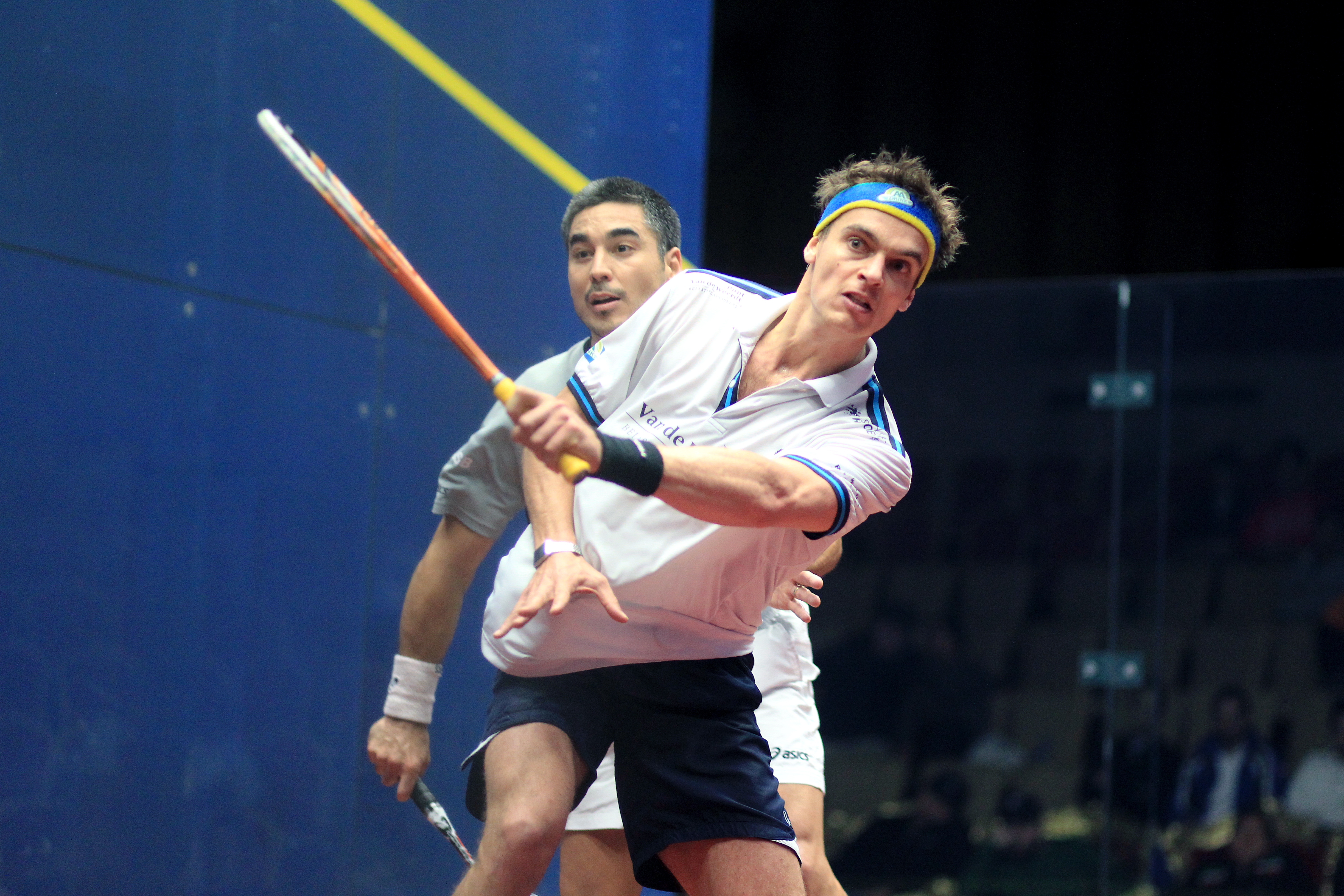 “I can see the thinking,” said Mat- thew. “But if they were going to try this out they could have done it from the first round. This could have been the one tournament a year with a proper cup competition. You could do the whole thing.”
“I can see the thinking,” said Mat- thew. “But if they were going to try this out they could have done it from the first round. This could have been the one tournament a year with a proper cup competition. You could do the whole thing.”
A frequently repeated objection was the risk of losing precious ranking points which leading players had travelled so far to earn and sweated so hard to gain. Matthew had an answer for that.
“You could have a regulation that you don’t have to earn (or lose) ranking points from this event, if you don’t want to,” he said. “You could be allowed to make a choice on that.”
One thing is certain, Matthew would not benefit directly from any of this. There’s enlightened thinking for you.
